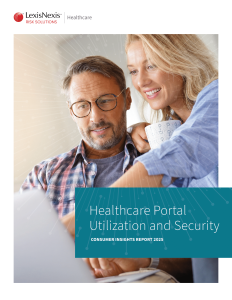How to Securely Connect Your Banks, Sync Devices, and Control Spending

In today’s digital age, managing your finances has never been easier, thanks to advancements in technology that allow you to connect your bank accounts, sync devices, and control spending with just a few clicks. However, with these conveniences come significant security considerations. Ensuring that your financial information remains secure while integrating various devices and platforms is crucial. This blog explores how to securely connect your banks, sync devices, and effectively control your spending.
1. Connecting Your Banks Securely
A. Use Trusted Financial Apps:
Choose reputable financial apps and services that are known for their strong security measures. Look for apps with high ratings, positive reviews, and strong industry credentials. Ensure that they use encryption and other security protocols to protect your data.
B. Enable Two-Factor Authentication (2FA):
Two-factor authentication adds an extra layer of security by requiring a second form of verification beyond your password. This could be a code sent to your phone or an authentication app. Enabling 2FA on your bank accounts and financial apps can significantly reduce the risk of unauthorized access.
C. Regularly Monitor Your Accounts:
Keep a close eye on your bank accounts for any unusual or unauthorized transactions. Set up alerts for suspicious activities, such as large transactions or login attempts from new devices. Early detection of fraudulent activity can help mitigate potential damage.
D. Use Secure Connections:
When accessing your bank accounts or financial apps, ensure you are using a secure, encrypted connection. Avoid public Wi-Fi networks for financial transactions and use a trusted Virtual Private Network (VPN) if necessary.
2. Syncing Devices Safely
A. Update Your Software Regularly:
Keeping your devices and software up-to-date is crucial for security. Regular updates often include patches for known vulnerabilities that could be exploited by cybercriminals. Ensure that your financial apps, operating systems, and security software are always current.
B. Implement Device Encryption:
Encrypting your devices helps protect the data stored on them. Encryption converts your data into a code that can only be accessed with the correct decryption key. This is especially important for mobile devices that you use for banking and financial management.
C. Use Strong, Unique Passwords:
Create strong, unique passwords for each of your financial accounts and devices. Avoid using easily guessable passwords or reusing the same password across multiple platforms. Consider using a password manager to securely store and manage your passwords.
D. Enable Remote Wipe Capabilities:
In case your device is lost or stolen, having the ability to remotely wipe its data can prevent unauthorized access to your financial information. Many security apps and services offer this feature, allowing you to erase your data from a distance.
3. Controlling Spending Effectively
A. Set Up Budgeting Tools:
Utilize budgeting tools and apps to track your spending and manage your finances effectively. Many financial apps offer features like expense tracking, budgeting, and financial goal setting. Regularly review your spending patterns and adjust your budget as needed.
B. Use Spending Alerts:
Set up spending alerts to notify you when you reach certain spending thresholds or make unusual transactions. These alerts can help you stay on top of your finances and prevent overspending.
C. Link Accounts for Comprehensive Insights:
Connect your bank accounts, credit cards, and investment accounts to a single financial management platform. This integration provides a comprehensive view of your financial situation, helping you make informed decisions and manage your spending more effectively.
D. Review Statements Regularly:
Regularly review your bank and credit card statements to identify any discrepancies or unauthorized charges. Promptly report any issues to your bank or financial institution to resolve them quickly.
4. Addressing Security Concerns
A. Educate Yourself About Phishing Scams:
Be aware of phishing scams and other fraudulent schemes that attempt to steal your financial information. Avoid clicking on suspicious links or providing personal information to unknown sources. Always verify the authenticity of communications before responding.
B. Secure Your Personal Information:
Be cautious about sharing personal information online or over the phone. Ensure that any financial transactions or account changes are conducted through secure and verified channels.
C. Backup Your Data:
Regularly backup important financial data to a secure location, such as an encrypted external drive or cloud storage. This ensures that you can recover your information in case of data loss or device failure.
D. Stay Informed About Security Best Practices:
Stay updated on the latest security best practices and trends. Knowledge of emerging threats and preventive measures can help you better protect your financial information and devices.
Conclusion
Securely connecting your banks, syncing devices, and controlling spending are essential aspects of modern financial management. By implementing robust security measures, using trusted tools, and staying vigilant, you can safeguard your financial information and enjoy the benefits of a connected and efficient financial ecosystem. Prioritizing security and adopting best practices will help you navigate the digital financial landscape with confidence and peace of mind.







